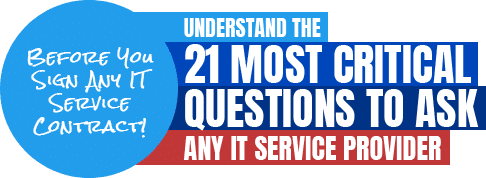
CIOs navigate through a complex labyrinth of new technology and challenges invoked by a surge in diversified business IT demands. Today, the habitual adherence to an outdated culture of adopting the latest tech sums up the average business’s IT playbook. But when it comes to network monitoring, many IT experts would agree that this primeval approach doesn’t cut it anymore.
Needless to say, a massive gap for improvement exists in network monitoring as we have recently learned from the rising number of cybersecurity risks. In this post, we address the top five network monitoring challenges for CIOs and how to solve them.
Filling in the Skills Gap
Overall, the IT industry has been dealt with a series of blows to its recruitment efforts. In the UK, 70% of technology employers expressed concerns, and the trend is set to continue to 2030, where other economies (US, Russia, and China) are expected to face skills shortages as high as 6 million vacancies.
Among the contributing factors for the low recruitment numbers is the dwindling hiring and training budgets, high costs of recruitment, and employee retention.
A skill shortage brings all kinds of problems with it, and CIOs must bring the right networking talent on board before putting entire operations at risk of serious attacks or outages. Nowadays, managed IT service providers such as BoomTech are widely preferred for their access to a diverse portfolio of IT talent for business needs. Not only do these experts take out the need for costly recruitment, but also provide trained network specialists and refined processes for a fraction of the cost.
Modernize Legacy Network Infrastructures
The adoption of legacy network infrastructure seems to be waning slower than expected, even as new cloud infrastructure promises greater flexibility, scalability, and operational cost benefits. Despite a 90% of respondents in an O’Reilly survey indicating using cloud services, one would argue that cloud vs on-premise equipment adoption is somewhat at a stalemate since 55% of respondents surveyed still reported clinging onto the deployment of on-premises infrastructure.
The reason behind this trend is clear: on-site infrastructure offers a better grip on control, efficiency, and security. These benefits make a logical case for the retention of legacy network infrastructure to run the company.
From this perspective, modernizing your network infrastructure may seem a daunting task. Modernization includes such activities as virtualization (to make maximum use of company devices) and automating frequent manual processes such as network monitoring and system updates. With modernization comes greater efficiency and security, enhanced workflows, and scalability.
Taming the Overwhelming Data
Each generation of equipment, software, and solutions brings a change in how data is collected and managed in the organization. And as the business grows, so does the volume of information collected and transmitted between cloud services, CRM, microservices, and user departments.
To understand just how much data small business systems process, here’s a brief rundown of the numbers:
- 1.7 MB is how much data one person can generate every second.
- The average office worker receives 141 emails per day, reveals Campaign Monitor.
- Small and medium-sized businesses manage 47.81 terabytes of data alone.
As the National Center for Biotechnology Information puts it, data overload can lead to burnout and even health complaints, and this can often be reflected in employee performance.
But handling such enormous amounts of data is only half the problem; the other half lies in making sense of such data. In short, the sheer abundance of information, while good for business, makes it more challenging to manage, analyze, or derive any meaningful insights from the data. In such a situation, you can easily miss out on critical issues that can adversely affect your business.
Thankfully, taming large volumes of data can be aided by the use of software tools and AI in analyzing vital data, eliminating redundancies, and duplicate records. At this point, it is important to mind the security of your business data and prevent it from falling in the wrong hands.
Easing Data Privacy and Security Concerns
Business networks have been accustomed to frequent attacks, but the propensity of such attacks has only grown recently. It is difficult to put an exact figure on the number of attacks on small businesses depending on their industry and size. However, one fact remains unchanged; privacy and breach can cost the average small business a bone-chilling $164 for every breached record.
As part of the network monitoring framework, managed service providers deploy 24/7 network monitoring tools that analyze data and detect anomalous behavior that might constitute a possible attack on the company and its data assets. Human security auditors often accompany such monitoring software and tighten the organization’s capability to repel an attack.
Depending on your industry, consider a managed IT provider with versatile experience in your industry’s compliance regulations. The consequences of non-compliance with HIPAA, GDPR, and similar regulations can be devastating for small businesses; failure to meet these standards may lead to reputation damage and expensive legal battles.
Responding to Growing Business Needs
When it comes to business growth, business leaders ought to consider whether their long-term goals are being met by the existing network. A healthy network is characterized by flawless operations, responsive applications, secure systems, and compliant policies that protect business and customer data.
Aligning your company’s network infrastructure with your objectives adds strategic value. Among your primary objectives at this stage is to automate some routine tasks and save valuable time. A business network is like an evolving ecosystem, and your network monitoring efforts must stay up to date if you want to stay ahead of potential issues. Monitoring your network for issues streamlines inter-departmental communication.
Conclusion
Overcoming your network challenges while ensuring your business runs smoothly can be tough, despite an abundance of tools designed to negate everyday issues and elevate your business to new competitive heights.
Consider leveraging the support of an IT service provider BoomTech. Not only can we secure and optimize your network, but also help your business achieve sustained growth.
Categories
Hear from Philipp Baumann, owner and founder of BoomTech:


